NoTwoAlike
Whiletheyareallvolcanic,eachislandisunique.Españolahassoftwhitesand.Floreanahassandlikebrownsugar.Lookclosely,andyou’llseetinygreenshardsofthepreciousgem,peridot.Genovesa’sbeacheslookverydifferentfromthese.Theyaremadeupofrazor‑sharp rocks.
Olderislandsseemmorelushandgreen.That’sbecausethey’vehadmoretimeforplantsandanimalsto thrive.
Erosionfromwindandwavesbreaksrocksdownintofertilesoil.Treesandotherplantstakerootintherichsoil.Theycreategoodplacesforanimalsto live.
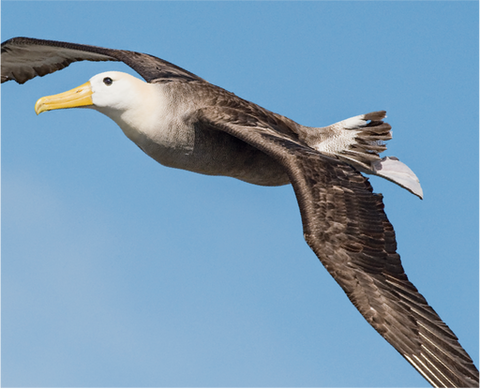
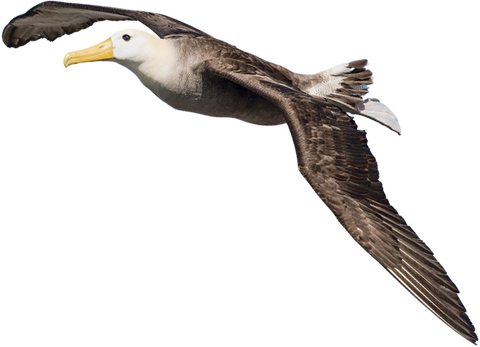
WavedalbatrossesruletheskiesovertheGalápagos islands.
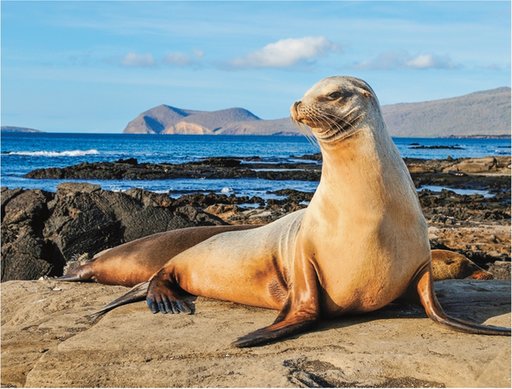
Sealionsbaskonvolcanic rock.
ComingtoGalápagos
TheGalápagosarelightlypopulatedwithpeople.Fiveoftheislandsareinhabitedwithatotalpopulationofonlyabout30,000.Yet,theislandshostsomeofthestrangest biodiversityofplantsandanimalsinthe world.
MostoftheplantsandanimalstheretodaytraveledfromSouthAmericalongago.Someofthefirstanimalswereprobablybirds.Seabirds,likethewavedalbatrosses,mayhavecometotheislandsforarestingornestingplace.Broughttotheislandsfromthemainlandbybirds,seedstookrootand grew.
Overtime,manyplantshavetakenrootandgrownalloverthis island.
BySeaandByAir
Otherseedsfloatedtotheislands.Mangroveseedsarelong,thin,andwaterproof.Theyareweightedononeend.Oceanwavescarrythemuntiltheyhitashoreline.Thentheytip,heavy‑sidedown,andtakeroot.Manyislandshereareringedwithmangroveforests.Theybecomenurseriesformanyspeciesof fish.
Insectsarrivedontheislandaswell.Somespeciesofbeetleshadwingsstrongenoughtoflythere.Galápagosspiders“ballooned”theirwayacrosstheocean,carriedbythe winds.
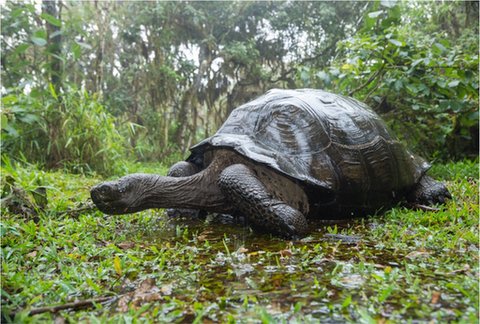
Longago,gianttortoisesfloatedtotheGalápagosfrom South America.
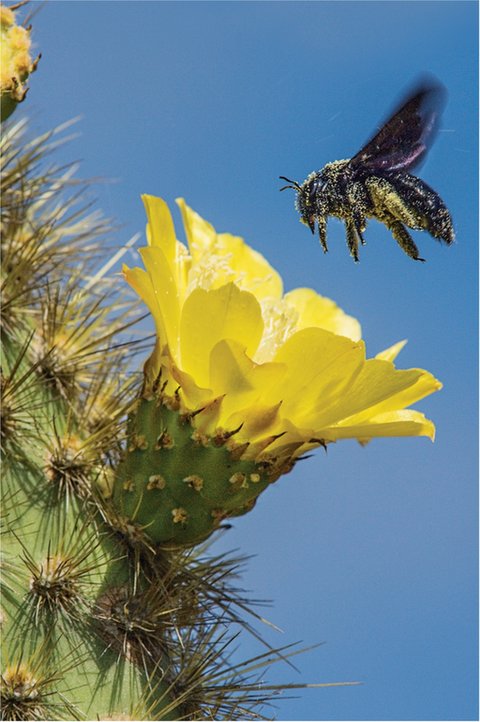
ManyGalápagosflowersbloomwhiteoryellow.Thesecolorsattracttheislands’carpenter bees.
Carpenterbeesarrivedbymistake.Theylaytheireggsindriftwood.Somewater‑bornwoodwascarriedbyoceanwavesstraighttothe islands.
Whataboutlargeranimals?Gianttortoisescan’tswim,buttheycanfloat.Otherreptilesmayhavefloatedtheirwaytotheislandsonpatchesofvegetation.Withnopredatorstogobblethemup,thesecreaturessettledintotheirnewhome.Slowly,theyevolvedtoadapttoisland life.